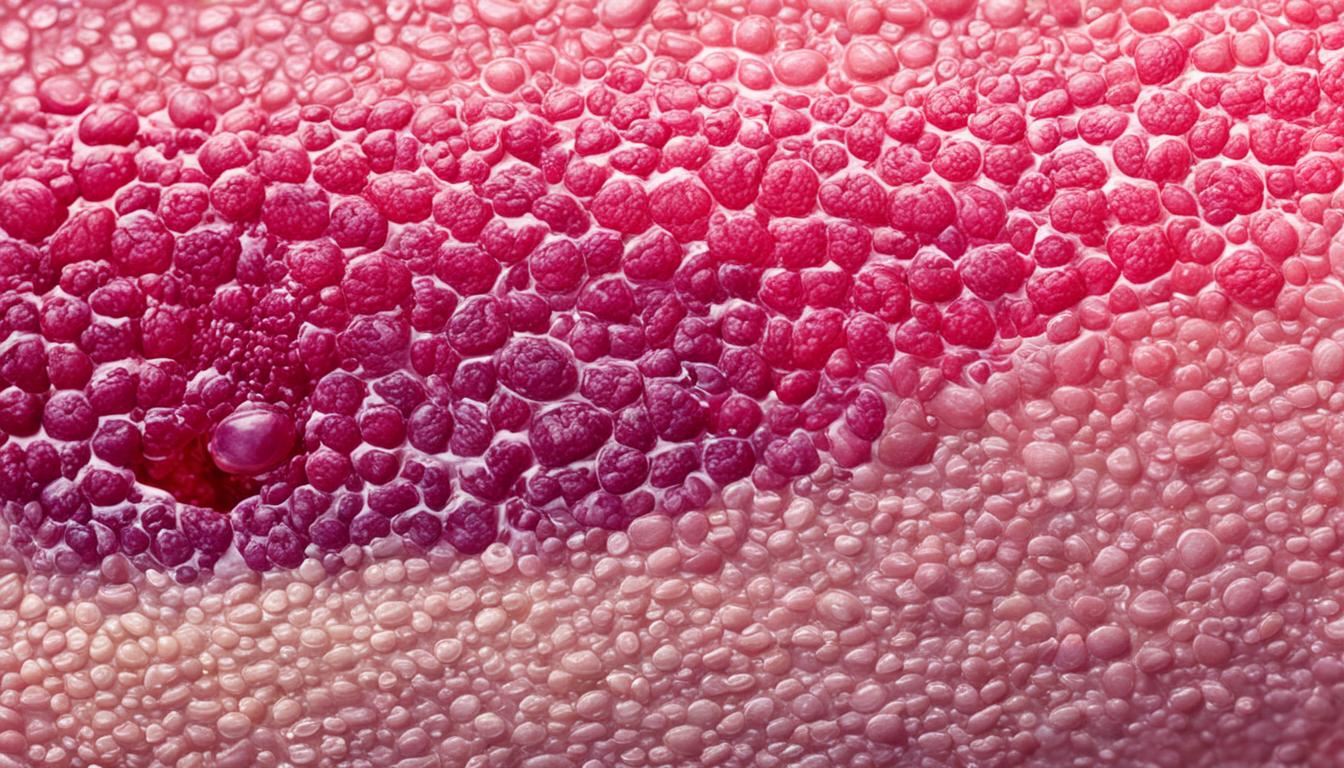Bullous pemphigoid is a chronic skin disease. It causes blisters and skin rashes. It mainly affects older people of both genders.
The cause of bullous pemphigoid is not completely understood. It is linked to a problem in the immune system. This leads to the skin being attacked, causing blisters and rashes.
Doctors use several methods to diagnose bullous pemphigoid. They check the patient’s symptoms and do tests on skin samples. A dermatologist can confirm the disease this way.
There are many ways to treat bullous pemphigoid. Doctors may use corticosteroids or newer drugs like rituximab. The goal is to reduce skin inflammation and its symptoms.
Research is looking into stem cell therapy for treating bullous pemphigoid. This method might help repair the skin by using the patient’s own stem cells. It’s an exciting area with potential future benefits for patients.
Dealing with bullous pemphigoid can be tough. But with proper care and treatment, its symptoms can be managed. This can greatly improve the life of those affected.
Key Takeaways:
- Bullous pemphigoid is a chronic autoimmune blistering skin disorder that causes blisters and skin rashes.
- The exact cause of bullous pemphigoid is unknown, but it is believed to involve the immune system.
- Diagnosis of bullous pemphigoid is based on clinical presentation, histologic examination, and immunologic findings.
- Treatment options for bullous pemphigoid include corticosteroids, immunosuppressive agents, and newer therapies such as rituximab.
- Stem cell therapy is an emerging field in regenerative medicine and shows promise as a potential treatment for bullous pemphigoid.
Symptoms of Bullous Pemphigoid
Bullous pemphigoid causes severe skin symptoms. The main one is developing blisters filled with fluid. These blisters can be quite big and hard.
People with this disease may also have a rash. It can look like urticaria or eczema. This rash comes with a lot of itching, especially at night, making sleep difficult.
When the blisters go away, the skin might have erosions. This damage can be painful. And, the skin might darken in some areas.
Some people with bullous pemphigoid only feel itchy and don’t see blisters. If you have intense itching or see odd changes in your skin, see a doctor. They can provide the right treatment after a proper diagnosis.
Signs and Symptoms of Bullous Pemphigoid:
- Development of fluid-filled skin blisters
- Presence of a skin rash resembling urticaria or eczema
- Intense itching
- Skin erosions as the blisters heal
- Post-inflammatory hyperpigmentation
- Some patients may only experience itching without visible blisters
It’s crucial to know the symptoms of bullous pemphigoid. If you have these signs, see a specialist in skin diseases. They can diagnose and treat you properly.
Causes and Diagnosis of Bullous Pemphigoid
Bullous pemphigoid is an autoimmune disorder that affects the skin’s basement membrane. It causes the immune system to wrongly attack these skin parts. This leads to blisters and skin problems. Doctors are not sure what exactly causes this response, but several things might play a part.
Mast cells are important in bullous pemphigoid. They’re a type of immune cell. These cells release substances that cause swelling and blistering. This includes histamine and cytokines.
Diagnosing bullous pemphigoid needs a detailed look from a dermatologist. The doctor looks at how the patient looks, skin samples under a microscope, and some tests.
Clinical Presentation
The dermatologist looks at the patient’s symptoms and skin. They might see redness, a rash, or blisters filled with water. Itching is a common complaint.
Histologic Examination
Histologic examination means looking at skin samples under a microscope. This helps see how the skin layers are separating and what cells are present.
Immunologic Findings
Immunologic findings are key to confirming bullous pemphigoid. They show presence of certain antibodies in the blood. Lab tests like ELISA can find these antibodies.
A dermatologist can diagnose bullous pemphigoid by looking at the symptoms, skin samples, and lab results. This is crucial for starting the right treatment.
Stem Cell Therapy for Bullous Pemphigoid
In the medical world, stem cell therapy offers a new hope for bullous pemphigoid. This method uses the remarkable healing power of stem cells. It aims to fix and regrow damaged skin, a major issue in this illness.
This approach could lead to skin repair, lower swelling, and make the skin healthier for patients. But, we must do more research to learn if this treatment is fully safe and useful for bullous pemphigoid.
Scientists are working hard to make stem cell therapy work better for this skin problem. By looking for new ways to use stem cells, they hope to ease bullous pemphigoid’s symptoms. Their goal is to boost the life quality of those living with this condition.

